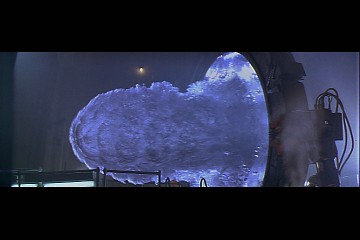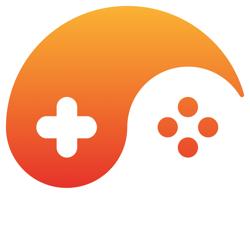Quote:| I created a "Rune Gate" system that allowed a player to click on various objects scattered around the place to "write" in a destination. |

Quote:| Once the player had entered a valid destination "phrase", the rune gate would activate and any characters within a certain distance form the gate, would be transported to the destination. |

Quote:| How this worked was that the rune stones scattered around the place and the items when used would add a word to the destination phrase of the nearby rune gate. Once the final word had been entered into the gate it would check it's list of known destinations to see if it was a valid one and then run the script to transport the creatures. |

Sorry - I thought the similarity was really amusing. :)
Quote:| Also, there could be certain environmental effects that could effect the power of these reagents. Like if you make the reagent in a certain location (say a goblin cave) it makes any spells cast with it more effective against a specific target(s) (say goblins). This way reagents are not as simple as "eye of newt is good for spells cast against goblins". It might be that "Tongue of Dog" if crafted in a goblin's cave is better for casting spells against the goblins. |
If reagents stack in the inventory (which I'm sure they do), how do you differentiate between goblin-killing dog tongues and the regular sort? Do they appear in a different slot? Could you potentially have a whole inventory full of dog tongues with specific strengths? How do you make this system so that wizards don't need to go crafting in four different areas to get bonuses for all the enemies found in one dungeon?
Quote:| The other thing that makes this kind of system non-trivial is having multiple ways to specify the same target. A player might start out having to specify a target by stating the vector (or such) to the target, but they might then learn the spells to enable them to see the specifics which enable them to target it directly. |
The system is trivial if you are giving the mages a language only to have the language result in the same effect as clicking the spell's picture in WoW. The system is useful if you give them the ability to customize the spells a little. Instead of [Subject][Verb][Object], try this instead:
[Energy Type][Spell Shape][Target, if applicable]
[Energy Type] denotes what type of spell you're casting. This implies that there will be a whole lot of Energy Type words - not only Fire, Water, Wind, and Earth, but also Ice, Dark, Healing, Esuna, Life, Poison, Drain, Paralysis, Treachery, Confusion, Control, Flight, Summon, Illusion... Certain energy type words can be combined with others to simulate different elements - for example, Water + Earth = Mud, Fire + Earth = Lava, Water + Wind = Storm. And perhaps higher levels result in being able to combine more energy type words - at level 25 you can start combining using two words, three words at level 50, four at 75. Maybe Water + Wind + Illusion creates the illusion of a storm to throw off anyone in the air, maybe Control + Flight + Dark lets you control one of your enemies while it's flying, and gives all its attacks the Dark attribute. Maybe Fire + Earth + Summon lets you summon the spirit of a volcano, Erfworld style!
[Spell Shape] is nicked straight from D&D. Spells can come in rays, cones, splashes, spheres, cylinders, walls, bursts, emanations, and "touch." Ray spells are straight lines from the caster, that usually stop once they touch something. Cones start at the caster and spread out, usually with a short distance. They affect multiple enemies. Splashes are usually magic items that you drop, and then the affect "splashes" out to the immediate area. Spheres, cylinders, and walls work like the shapes they describe. Bursts and emanations start from places other than the caster, but emanations continue to spread after the initial casting. Touch spells require the mage to touch the target - usually these are healing spells. Spell shapes are learned over time just like energy type words are - in the beginning, you only have rays, but as you go along, eventually you get things like Body, which creates a physical copy of the caster made of the specified Energy type.
[Target] is basically a [Spell Shape] word. You don't select the name of something, because you might be fighting fifteen goblins, so "goblin" won't give you an edge - after you've selected the target, you add the Target word in (it might be Monstra or something), and the spell only affects who you've targeted.
Distance and point of origin for spells, I would say that's handled by point-and-click and targeting. You can be as far away from the point of origin of your spell as you like, but being farther away takes more mana. Some (monstrously rare) items might be able to let you use certain abilities from an infinite distance, like Life or Teleport. If you want to increase the radius of your cylindrical spell, just keep holding the mouse button down. For some shapes, holding the button lengthens the spell duration instead - if you're shooting a ray of lightning, Palpatine-style, you can't really change the range once you've hit someone, so instead you just keep shocking them until something interrupts you or you run out of mana.
Other possibilities with this system:
-Order matters. Perhaps Fire + Water makes water "rain" from the sky, while Water + Fire makes a cloud of blinding smoke/steam. Order may not matter all the time, but it would be a nice way to emphasize the finicky nature of magic.
-Special combinations have a word attached. Perhaps the first time you use the Ice + Wind + Cylinder combination, you are alerted somehow that you or nature recognizes this phenomenon as separate from the usual jumble of raw power by wizards, and calls it "Hailstorm." Whether you instantly learn the word or need to consult with a higher-level mage to determine its name is up for grabs, but this means that every time you use Hailstorm, it's the same as Ice + Wind + Cylinder but with some oomph behind it. This would be the case with summon spells especially; once you've summoned a djinni, you know to Summon + Djinni from here on out.
-Certain combinations fail. Sometimes, you just don't want to code every possible combination of energy types.
-Unique scrolls for a more diverse magic market. To buy a scroll, you search by the words used. Let's say I wanted an Earthquake spell. I'd probably search for something like Earth + Ray. I'd most likely face a lot of results - would I want to shoot a spike of stone? Throw dust? Once I found the earthquake spells, I could organize them by price, or duration of effect, or accuracy, or mana provide... and finally buy one based on what I might need. Scrolling itself would take mana from the wizard/scribe with a slightly slower regen time than normal. The wizard can put as much mana as he/she wishes into the scroll, which changes how long the spell lasts when it is used. Using the scroll takes half the mana allocated in the scroll from the "end user," so that one mage can't use an inventory full of powerful scrolls without some cost. Perhaps more powerful scribes can reduce this cost to one-fourth of the mana needed to create the scroll.
-Spells to release at a later time. As the dev team, you can always plan to release new words or combinations later on, which represents how scholars of magic have been researching the findings in an ancient ruin. Or something. Perhaps these releases are somewhat player dependent - certain repeatable research quests with the NPC mages add up until they announce a new discovery.
[Edited by - bardbarienne on August 23, 2009 5:01:40 PM]









